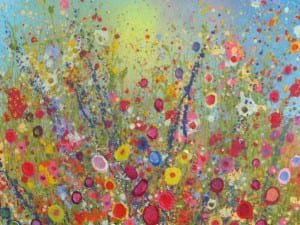It’s often said that in order to advance an idea one must look not to the idea itself, but to what came before. Amongst the architectural projects of the 1950s and 1960s there were many experimental approaches to a new, utopian architecture. Some of them, such as Constant Nieuwenhuys’ New Babylon, sought to achieve their utopian ideals through an amalgamation of the painter, sculptor, and architect’s labours.
For various reasons Constant was eventually forced to concede that his programme must be conceptual rather than theoretical, but this need not necessarily be deemed a failure. Lebbeus Woods, for instance, worked experimentally and suggested that in practice these arts are rarely united in anything but the most tentative ways.
In Zaha Hadid’s early paintings and drawings, on show at the Serpentine, London, viewers see her looking beyond the utopianist forbears, re-investigating shared influences through her own formalist, experimental designs, and in many ways succeeding where others have not.
These early paintings are strongly informed by the Suprematism of Malevich, and the Constuctivism of Tatlin and Rodchenko. Consequently, precursors to these movements also shine through, as in the notable elements of analytic cubism and futurism in the prismatic terrain of Overall Isometric—Day View (1983) for The Peak, Hong Kong (1982-83).
Mainly in acrylic and ink on cartridge paper, the paintings are representational in that they depict a potential architecture, but in an architectural context this potentiality makes them abstract. A cubistic approach flourishes through this abstraction also, as in London 2066, for British Vogue (1991), where different perspectives and geometric projections encroach on one another, emphasising diverse states of space, experience, and temporality, adding to the sense of potential.
In turning specifically to Malevich, Hadid synthesised his Suprematism with the sections, plans, and isometrics of architectural drawing to posit this abstract architecture which, though controversial, proved the feasible basis for an expansion in praxis, laying the way for the formal and functional heuristics of parametricism.
Through this engagement with the 20th century Russian painter the viewer sees the origins of some of Hadid’s most ground-breaking formal “discoveries”: Explosion, which gave order to the chaotic fragmentation of de-constructivism while eschewing repetition; Distortion, which uses perspectival projections to posit distorted forms rather than portray regular ones, making the aforementioned cubism a tool of design, not merely observation; Landscape, which does away with hard boundaries in favour of a more mutable definition of space and field, reflecting both Malevich’s handling of paint to create fading effects, and the politically significant conception of fluid social space developed by the avant-garde architects of the 1960s.
Though Hadid was always at the forefront of technological innovation in architecture – reflected by the exhibition’s inclusion of an immersive virtual reality experience allowing viewers to see her abstract structures in motion – perhaps the most remarkable thing about her as both artist and architect is that she was able to conceive of such ‘moves’ before computer design technology was widely used. This is especially true of another of her “discoveries”: calligraphy.
The exhibition includes a collection of notebooks with examples of hand drawn calligraphic forms, intended not as sketches to be rationalised, but designs to be realised. To see these with some of Hadid’s later work in mind is to understand the scope of her vision and audacity, fully justifying the epithet: “queen of the curve.” From notebooks to buildings the audience is given to understand with no small pleasure how this mathematician, artist, and architect succeeded in turning experimental paintings of an abstract utopian architecture into significant gains for her discipline.
As for those early criticisms of Hadid’s formalist tendencies, we are now beginning to see the truth in her colleague Patrick Schumacher’s statement “form delivers function“; these pictures, whose explorations have borne so much fruit, make the foundations of a fitting legacy for the utopianist and futurist: she leaves us new possibilities for both form and function.
Ned Carter Miles
Zaha Hadid: Early Paintings and Drawings at Serpentine Sackler Gallery, London, until 12 February. Find out more: www.serpentinegalleries.org
Credits:
1. Vision for Madrid, Spain, (1992). Photograph: © Zaha Hadid Architects.





